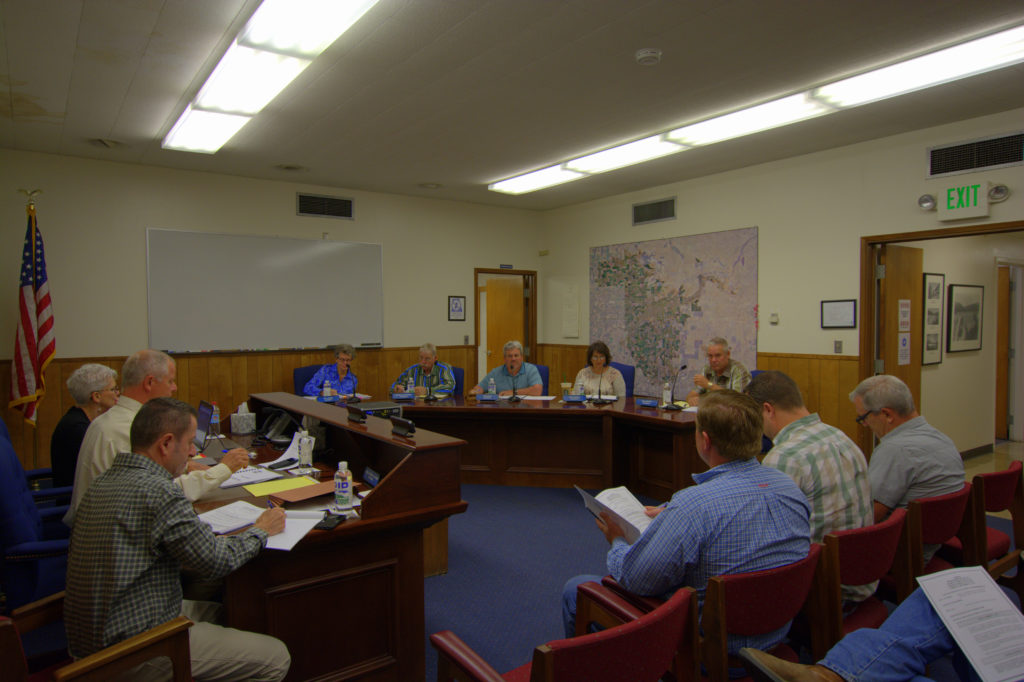
So far, it’s been a rough year for the Oakdale Irrigation District (OID), and it’s not even half over. First, OID lost again in its case against the Oakdale Groundwater Association (OGA) when the Fresno Appellate Court denied its appeal and awarded OGA court costs and attorneys’ fees. That decision cost OID upwards of $330,000, in addition to the money it shelled out to its own attorneys.
Next, OID lost a case it had filed against two of its own board members, Gail Altieri and Linda Santos. Altieri and Santos riled their fellow board members by daring to tell the truth as they saw it to a judge. When a majority of board members chose to sue, another judge ruled the women had every right to act in the interest of honest accountability.
The bad news was in addition to a little-known rebuke from the state that occurred last year. Like other San Joaquin Valley irrigation districts, OID joined in legal protests of the state’s proposals to increase flows along the Valley’s major rivers in order to restore salmon runs and protect habitat for endangered species in the San Joaquin Delta.
Last July, the state published its responses to OID’s objections to the proposed new flow requirements. OID would doubtless prefer the state’s position remain under wraps, because one inescapable takeaway is that OID isn’t going to get away with its typical water shenanigans much longer.
OID has long depended on sales to buyers outside the district to subsidize water use by district farmers, who get their water well below the cost of delivery. Though the sales can result in significant environmental impacts, OID has always managed to skirt requirements for Environmental Impact Reviews (EIR) by what most observers agree are devious methods.
Dodging those reviews became even more difficult after the state imposed the Sustainable Groundwater Management Act (SGMA). In fact, it was OID’s failure to assess the effects of water sales on local groundwater basins that was the foundation of OGA’s winning judgments in court.
Nonetheless, OID has seemed determined to persist in selling water to buyers south of the San Joaquin Delta. In the recent past, one of its preferred methods of getting around requirements for an EIR was to abandon its water rights so that “surplus” water released down the Stanislaus River could be purchased by buyers outside the district.
Bizarre as this scheme may seem, local politicians and pundits rarely took public notice of it, and OID clearly intended to continue such practices as long as it could get away with them. The OGA lawsuit made the practice more difficult, but now that the state has chimed in, OID may have to abandon more than its water rights—it most likely will have to abandon all the dodges and deviations it’s employed to keep subsidized water flowing to district farmers.
The foundation for OID’s claims that it can do as it pleases with its water allocations has been built on pre-1914 water rights. The state water board rocked that argument by replying that OID’s yearly allotment of water stored behind New Melones Reservoir—some 300,000 acre feet—amounts to contractual water rights because an agreement made in 1988 about how the water will be distributed supersedes “underlying claims”:
“The 1988 Agreement is separate and distinct from the common category known as ‘CVP contracts,’ but the rights and quantities conveyed in the 1988 Agreement are properly described as contract rights, regardless of underlying claims.”
In the abstruse world of water and water rights, contract rights are known as, “paper water,” and are considered the least substantial rights of all. While the state’s position on OID’s rights is bound to be controversial, it nonetheless puts a serious crimp in OID’s self-designated role as absolute sovereign of its water allocations.

Perhaps even worse for OID, the state has obliterated its ongoing justifications for water sales, which were based on flawed notions of conservation, benefits to needy farmers, and advantages for wildlife.
OID farmers have long claimed that paying more for water would impose unreasonable hardships, but as the state points out,
“there are growers in neighboring service areas that are not subsidized by equivalent water sales but find it economically viable to continue producing crops, maintaining infrastructure, and investing in improvements.”
The state’s most powerful response to OID’s objections to increased flow proposals, however, also provides a reminder to everyone who has been objecting to what our local politicians, poohbahs and pundits have been calling a “grab” of “our” water:
“The waters of California belong to the public and cannot be owned by any individual or entity. A water right is granted for reasonable and beneficial use of the state’s waters, but does not constitute ownership of the waters. This means that the entitlement extends only to the reasonable and beneficial use of water, but not to indefinite benefit of any excess water.”
In short, for years OID has been selling water it doesn’t own so that district farmers, many of them multi-millionaires, can continue to receive water below the cost of delivery. It will be interesting to see when and if local leaders and media begin at last to be as vociferous about OID’s chicanery as they’ve been about the state’s flow proposals.

Good presenatatoin of the issues Mr. Caine. You and I seem to be on the opposite sides of the aisle on National Poltics, but this article is spot on!
As that great American said, Mr. Woods, “All politics is local.”
California has seen its share of greedy people who believe the Sierra watershed belongs to those who live upstream, and to heck with everyone else. I’m pleased the Waterboard recognizes water is a public resource like the air and sun and not a private trophy for greedy people to fleece. The Trump administration plan to open fracking is another fleece that will take millions of gallons of our precious water to fill in ancient plums of oil. I’m glad the Court ruled against OID, and we need to ensure Chevron and other oil giants don’t fleece our precious water, too.
Do you have a link to the Waterboard site where you obtained their last quote that “The waters of California belong to the public and cannot be owned by any individual or entity. “?
Keith: It is the link at “responses to OID’s objections.” You have to scroll to comment 62.
Of course the radicals at the state water board use this pathetic justification to confiscate this water for their fraudulent water theft plan. This will end up in court and just like the state water curtailment case, the clowns over at the State Water Board will lose.
“The waters of California belong to the public and cannot be owned by any individual or entity. A water right is granted for reasonable and beneficial use of the state’s waters, but does not constitute ownership of the waters. This means that the entitlement extends only to the reasonable and beneficial use of water, but not to indefinite benefit of any excess water.”
The State Water Board is full of nonsense. Packed with radical environmentalists they lost a couple of court cases already and they will lose this case too. Their water grab will fail